If you’ve never tried making fermented red cabbage before, this is your sign to go for it! It’s easier than it sounds and healthy for you!
All you need is half a cabbage, some salt, and a little patience. I make sauerkraut and other fermented veggies on repeat! It’s tangy, crunchy, and packed with gut-friendly goodness.
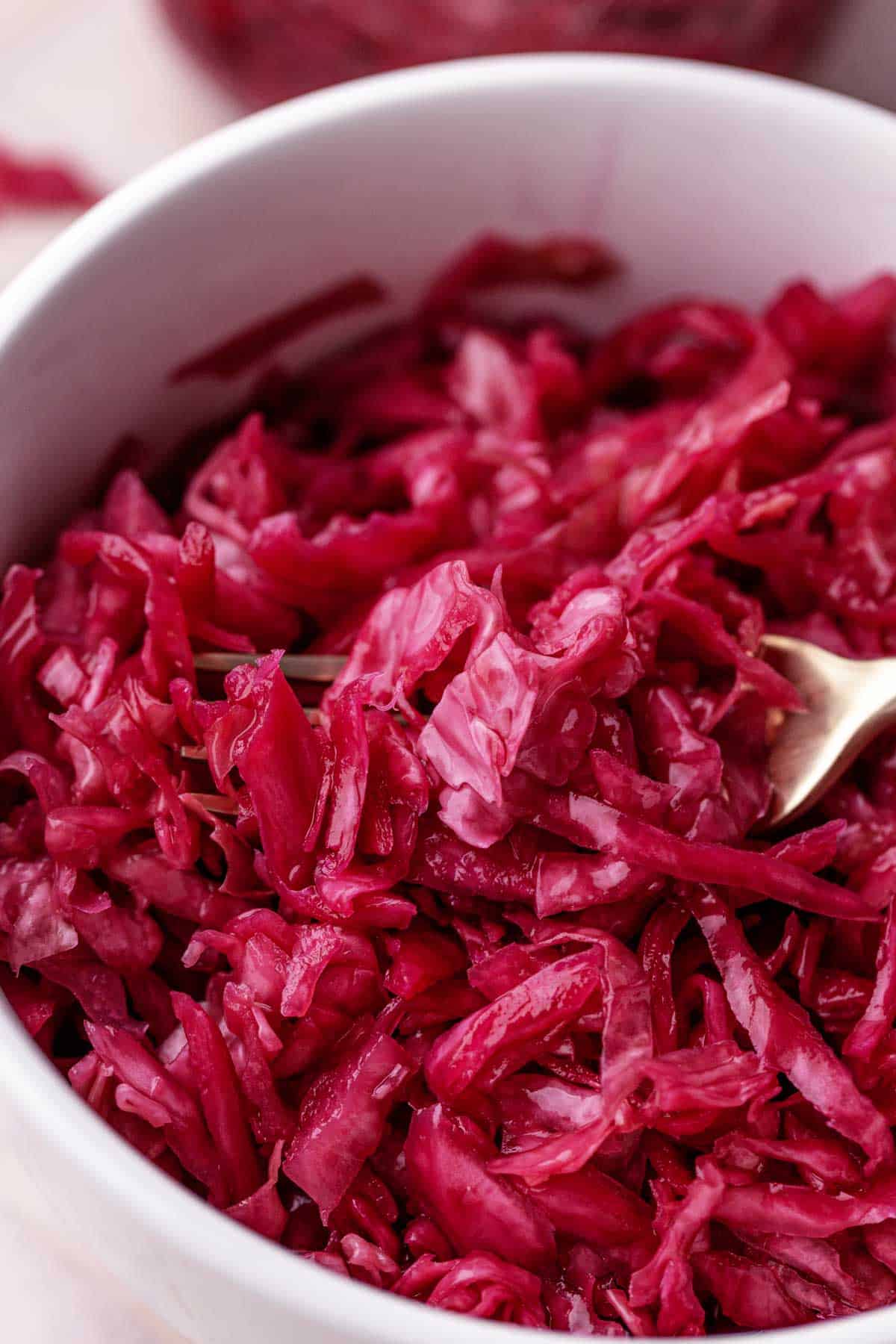
Why I Love This
Cabbage is one of my go-to ingredients—it’s naturally anti-inflammatory and when you ferment it, it turns into a little gut health superhero. I use cabbage all the time and have tons of favorite recipes I make every week.
Want to Save This Recipe?
Enter your email and we’ll send the recipe directly to you!
By submitting this form, you consent to receive emails from The Yummy Bowl.
Ingredients
- Red cabbage – Use half a medium head, about 600g. Slice it thin for even fermentation. Red cabbage has a gorgeous color and slightly sweeter flavor than green.
- Salt – I use fine sea salt. This pulls the water from the cabbage and creates a natural brine—no vinegar needed!
- Spices (optional) – Bay leaves, garlic cloves, mustard seeds, peppercorns, or caraway seeds all add flavor. I like tossing in a bay leaf and a few mustard seeds for an extra little kick.
- Mason jar – A 32-ounce wide-mouth jar works great. Make sure it’s super clean (sterilized) before packing.
📋 You can find the full ingredient list in the Recipe Card below the article.
How To Make
- Prep the cabbage: Remove outer leaves, then slice half the cabbage into quarters. Cut out the core and finely shred the rest using a knife or mandoline.
- Massage with salt: Place the shredded cabbage into a big bowl and sprinkle with 1 tablespoon sea salt. Massage with your hands for 2–3 minutes, then let it rest 10–15 minutes.
- Check the liquid: After resting, you’ll see purple liquid at the bottom of the bowl. That’s your natural brine!
- Add spices: Stir in any whole spices (except bay leaves—save those for later).
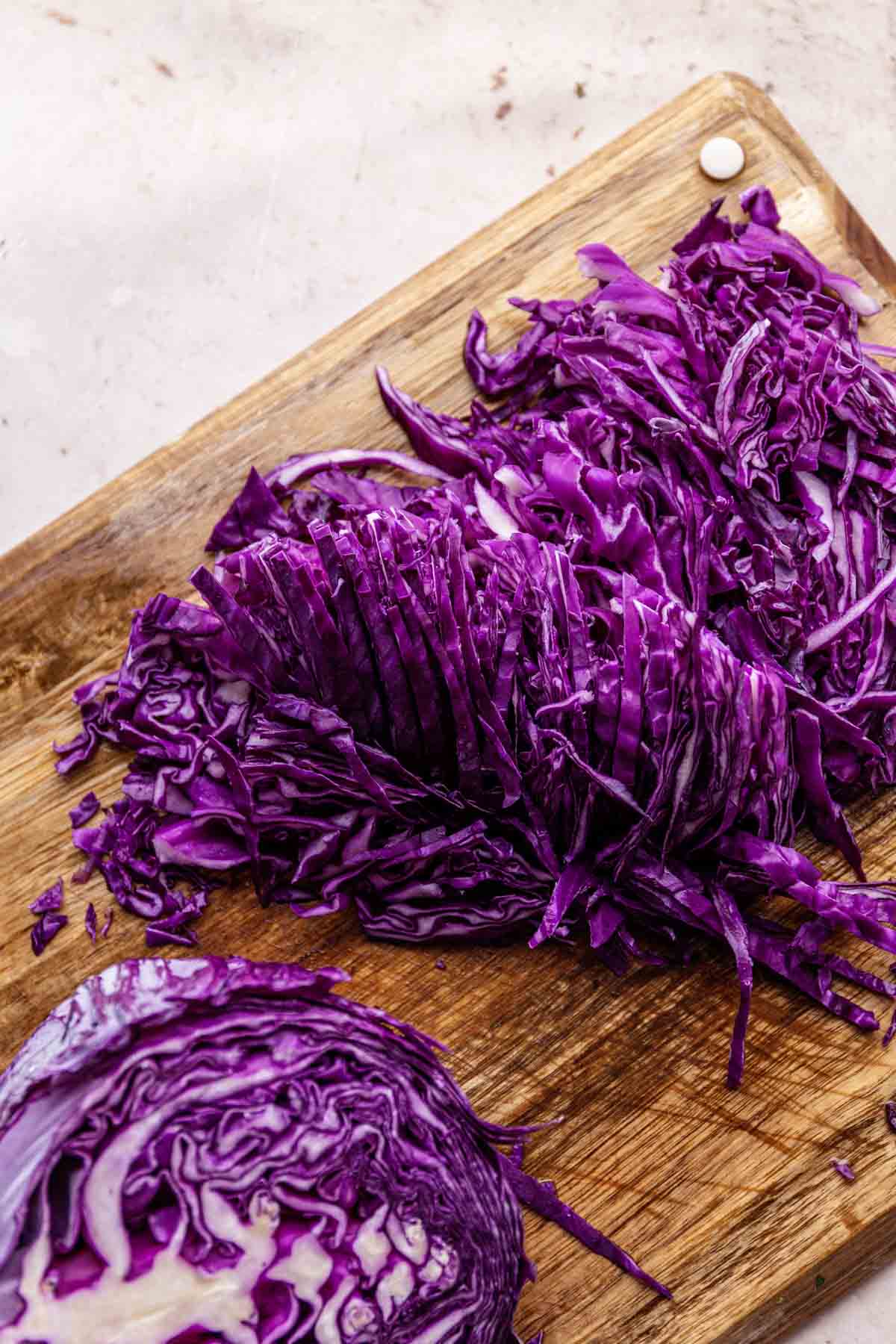
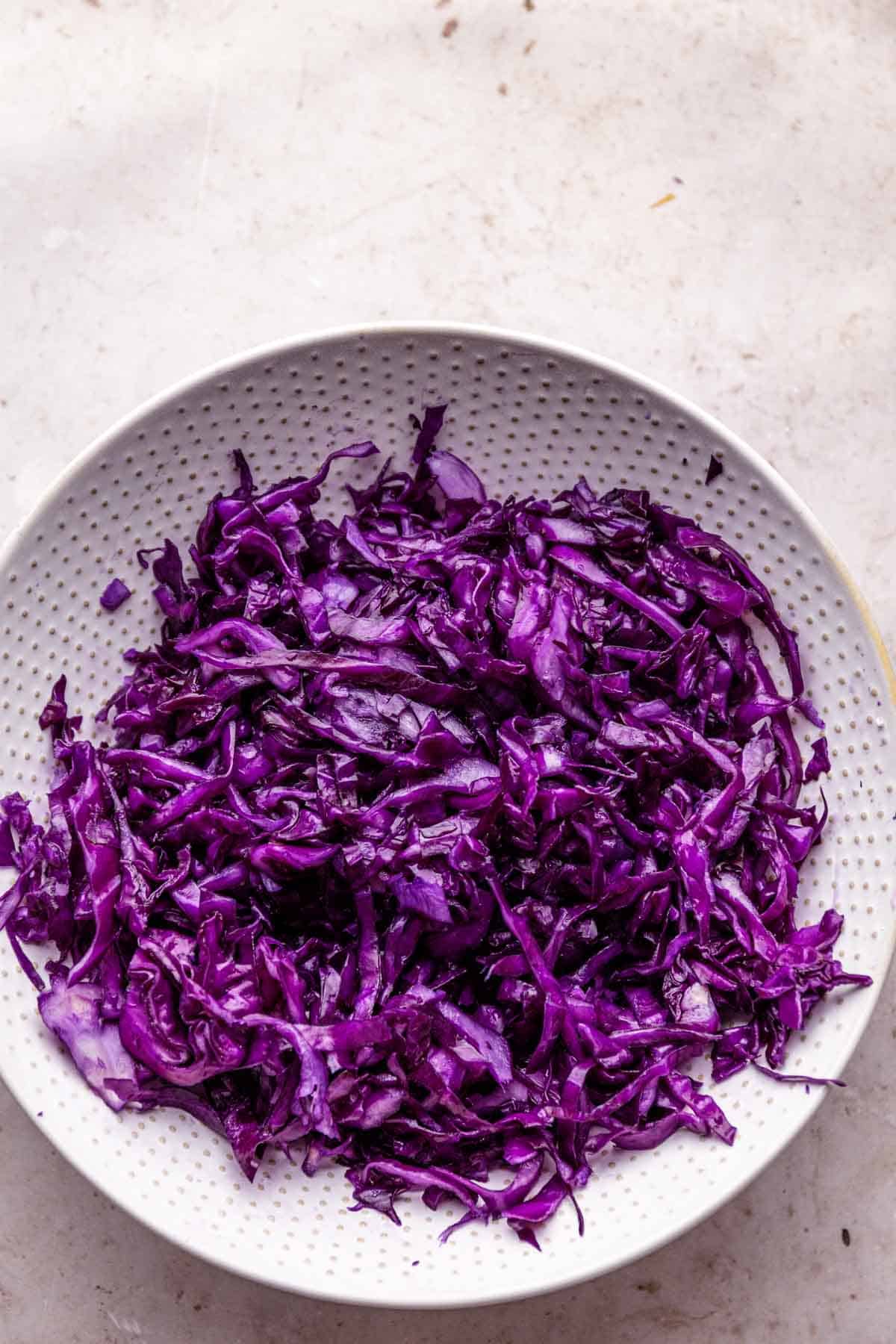
- Pack the jar: Firmly press cabbage into your clean mason jar using a wooden spoon. Pack in layers and press down as you go. Add the bay leaf near the top.
- Top it off: If your cabbage isn’t fully submerged, top off with 2% brine. Wedge in a piece of cabbage core or use a fermentation weight.
- Cover: Loosely cover with a fermentation lid or cloth secured with a rubber band. Place the jar on a plate in case it bubbles over.
- Ferment: Leave the jar in a dark, room-temperature spot for at least 7 days. Burp the jar (open lid slightly to release gas) if needed.
- Taste and store: After 1 week, taste. If it’s tangy enough, remove weight and seal with a regular lid. If not, ferment longer (up to 3 weeks). Then move it to the fridge.

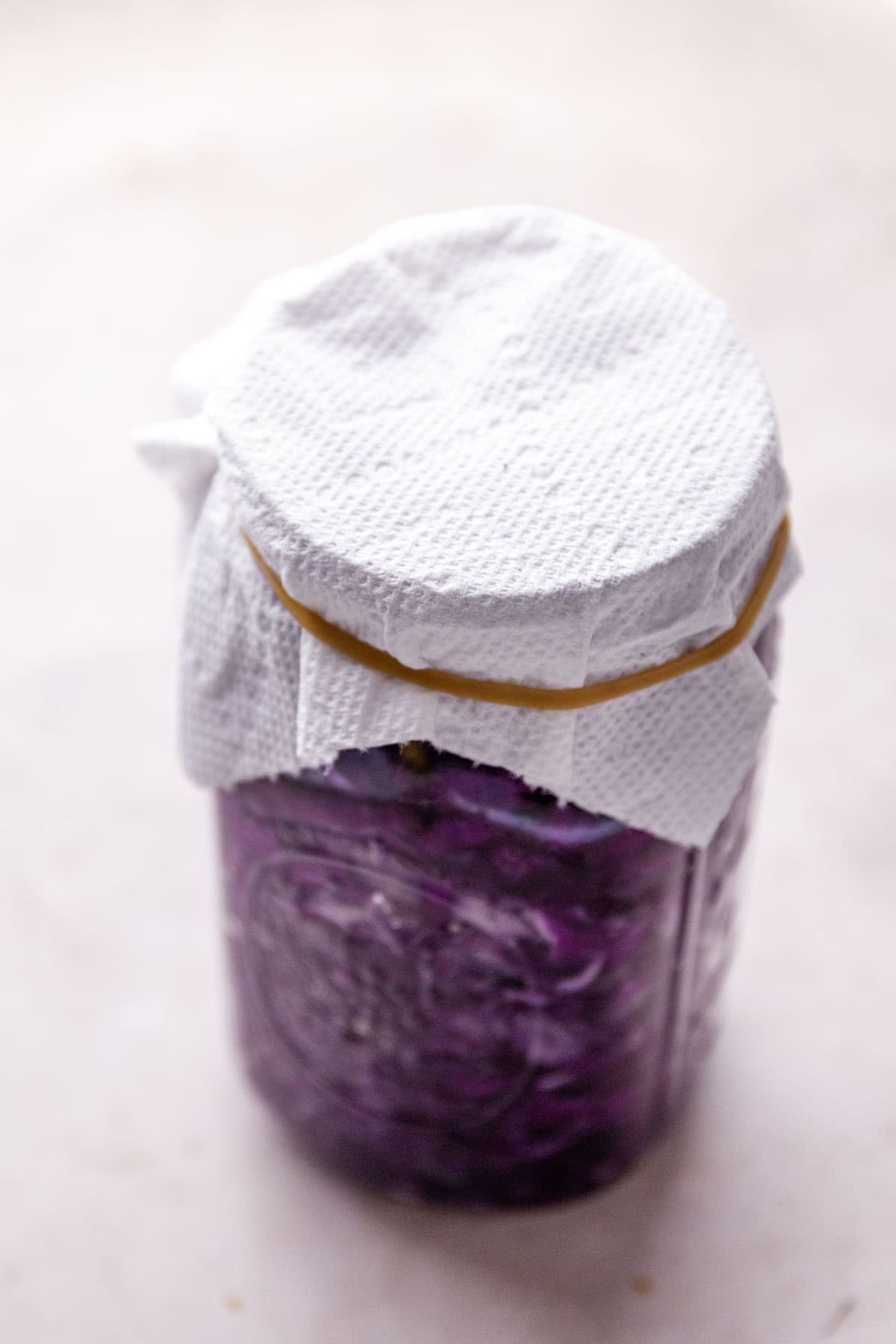
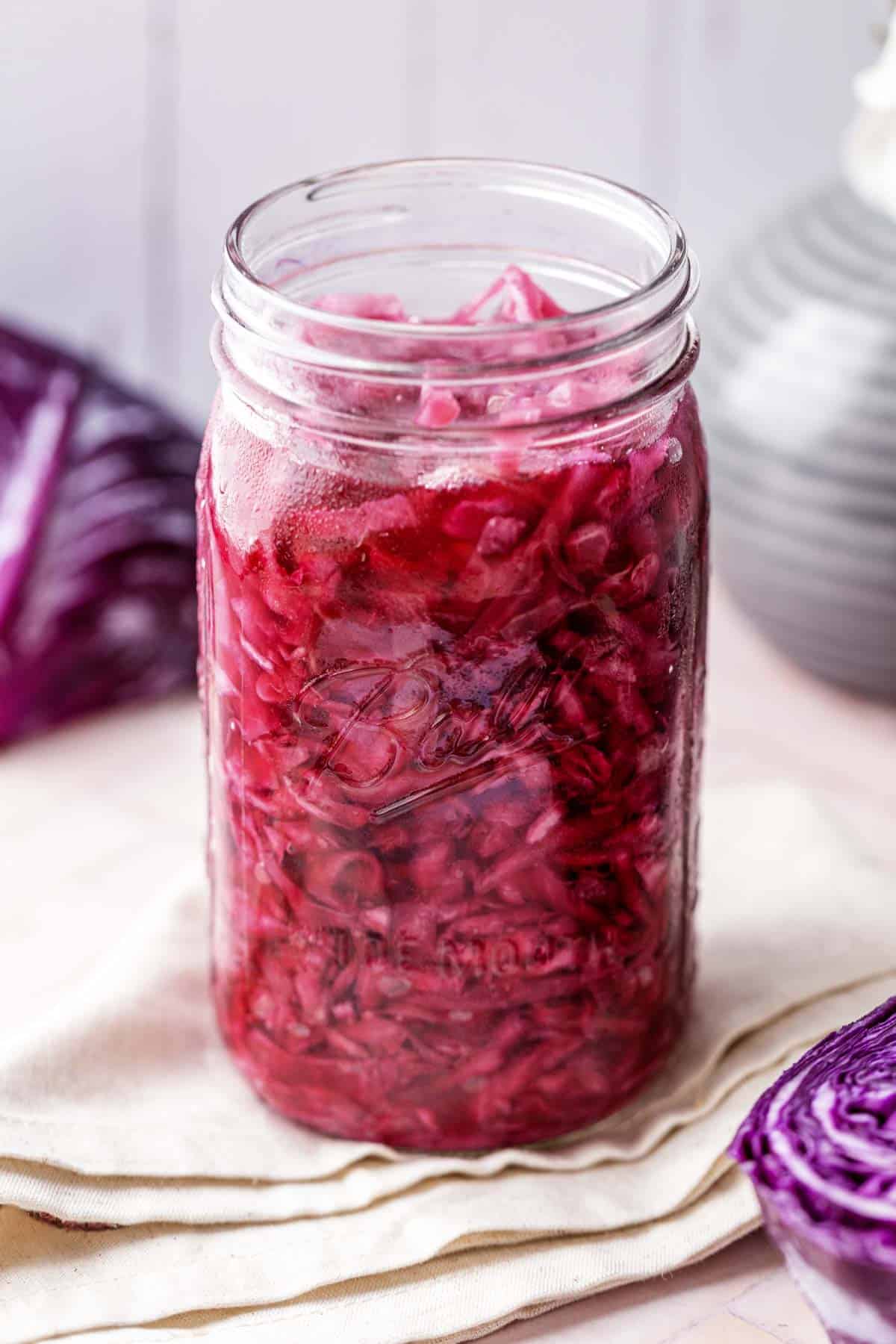
Tips
- Start small - Start with a small cabbage head, It’s way more manageable, especially if you're new to fermenting—and less stressful if it doesn’t go perfectly the first time. To find out how much salt you need for fermenting check out my tips below!
- Always use clean tools and hands, this keeps the ''bad'' bacteria away.
- Slice thinly - I like using a mandoline for super thin shreds. They ferment faster and more evenly. Plus, they’re easier to pack into the jar!
- Let it rest - After massaging, let it sit 10–15 minutes. You’ll start seeing that natural brine collect.
- Always keep it submerged - If any cabbage floats up, it can get moldy. I use a cabbage core wedge or a fermentation weight to hold everything down.
- Taste as you go - I usually start tasting around day 4-5. Some batches are perfect then, but other times I leave it for up to 2 weeks if I’m craving that extra tang.
- Watch the temp - Keep your jar somewhere cool-ish—around 68–72°F. Too warm and things can go soft or overly sour.
- Skip the tap water - If you need to add brine, use filtered or non-chlorinated water. Chlorine can mess up the good bacteria we want.
- Avoid metal lids - Fermentation is acidic, and metal can react with it. I use a plastic lid or a clean cloth with a rubber band—it works great!
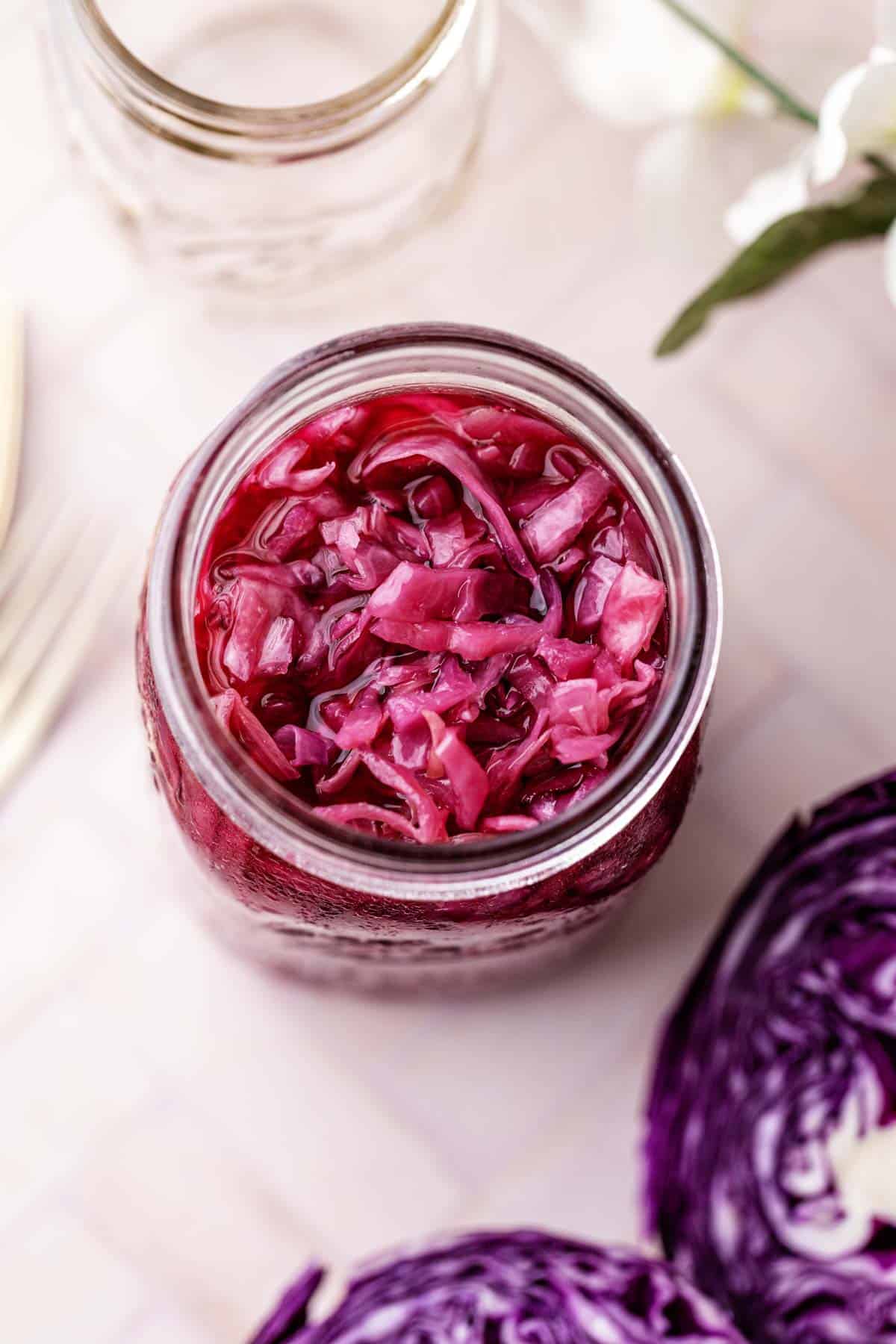
How Much Salt You Need For Fermenting?
To calculate how much salt you need for fermenting red cabbage, use this simple formula:
Use 2% salt by weight of the cabbage. That means:
- Weigh your shredded cabbage (in grams)
- Multiply that number by 0.025 to get how many grams of salt to use
Example:
Let’s say you have 600 grams of shredded red cabbage:
600g × 0.025 = 15 grams of salt (1 tablespoon)
You’d need 15 grams of fine sea salt for that batch.
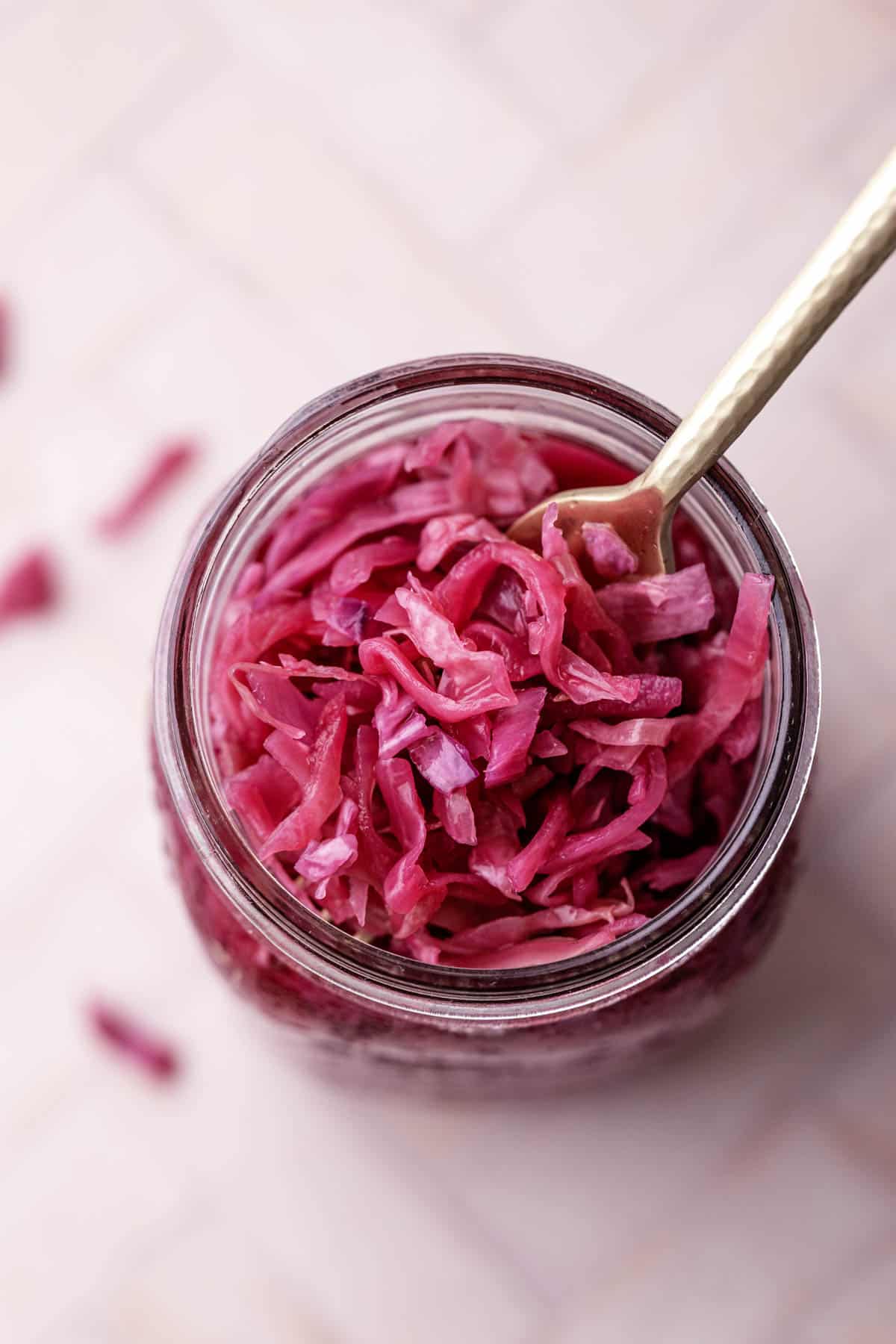
Serving Suggestions
I try to incorporate a type of fermented food to every meal I eat.
- Fermented cabbage is perfect on top of scrambled eggs, grain bowls, with vegetable patties, mashed potatoes, asian meals and so much more!
- If you're brave enough, try it out in stir fries or sauerkraut soup!
Storing Instructions
To Store. Keep in the fridge with a tight-fitting lid. It lasts several months (but is usually gone in my house in a few days!).
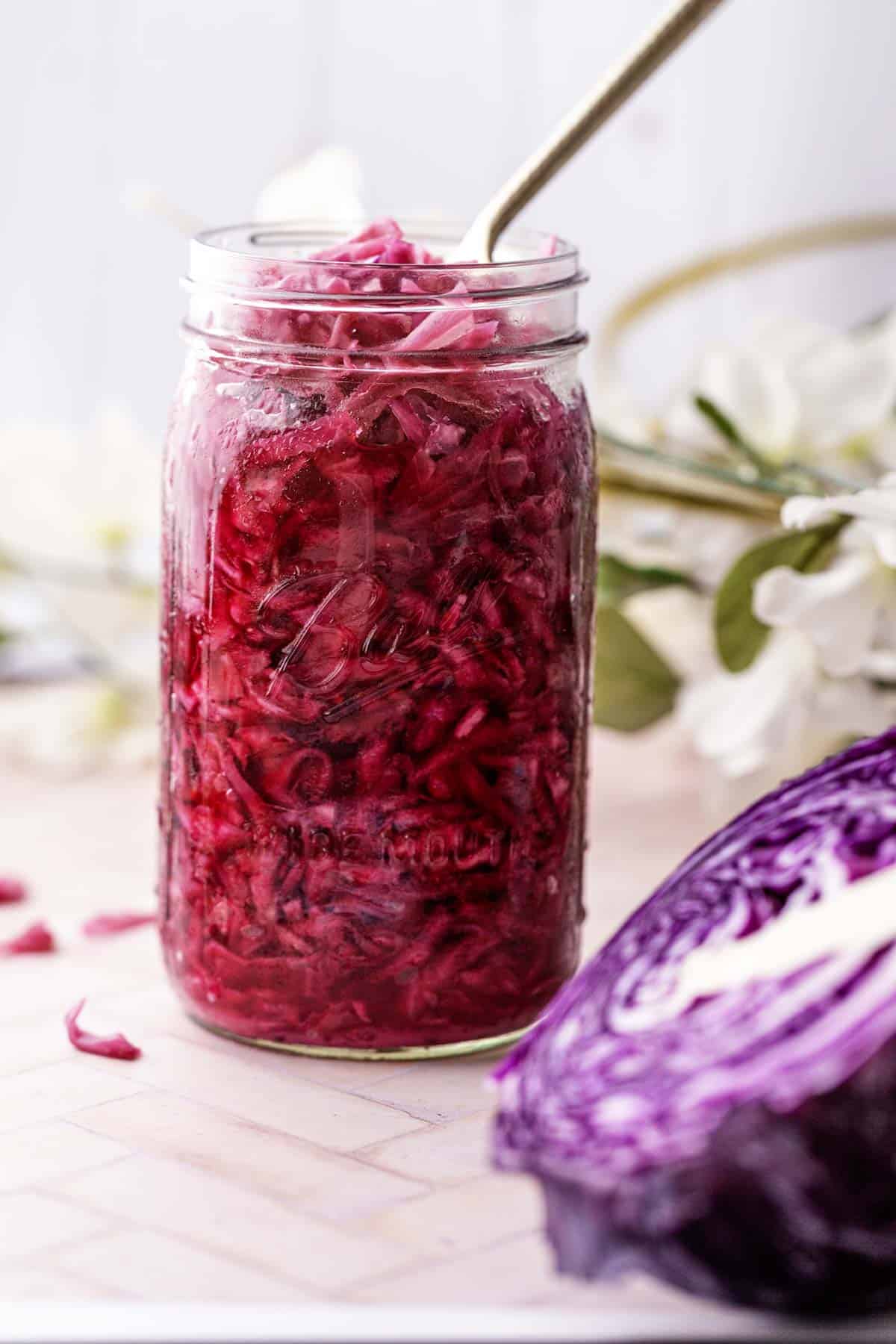
More Recipes
Did You Like This Recipe?
Leave a ⭐️⭐️⭐️⭐️⭐️ rating below and share it on Instagram, Facebook, and Pinterest!
Recipe Card

Fermented Red Cabbage
Want to Save This Recipe?
Enter your email and we’ll send the recipe directly to you!
By submitting this form, you consent to receive emails from The Yummy Bowl.
INGREDIENTS
- half of red cabbage head, about 600g, shredded finely
- 1 tablespoon salt
- 4 cups water + 1 tablespoon salt
- 32 ounce mason jars
- optional add-ons of choice, peppercorns, garlic, ginger,bay leaves, caraway seeds, mustard seeds
INSTRUCTIONS
- Prep the cabbage: Remove the outer leaves from the red cabbage and cut it in half. Set one half aside for another recipe (or double this batch!). Slice the other half into quarters, cut out the core, and finely shred using a sharp knife or mandoline. Thin slices help everything ferment more evenly.
- Massage with salt: Place the shredded cabbage into a large bowl. Sprinkle with fine sea salt (about 1 tablespoon per pound of cabbage) and massage it with clean hands for a few minutes until it softens. Then, let it rest for 10–15 minutes. You’ll start seeing some liquid pooling at the bottom—this is your natural brine!
- OPTIONAL step. Add spices: Toss in any whole spices you’re using like caraway seeds, mustard seeds, or black pepper. Keep bay leaves whole and set them aside to add directly to the jar—this helps prevent too much bitterness.
- Pack the jar: Scoop the cabbage into a clean mason jar, packing it down firmly with a tamper or wooden spoon as you go. You want to press out air bubbles and encourage the liquid to rise. Keep packing until the jar is nearly full, but leave 1–2 inches of space at the top.
- Top it off: If the cabbage isn’t fully submerged in its own juices, add a bit of 2% brine (1 tablespoon salt dissolved in 4 cups non-chlorinated water). You can wedge in a piece of the cabbage core or use a glass weight to keep the cabbage under the liquid.
- Cover: Use a fermentation lid or cover the jar with a clean cloth and secure it with a rubber band. Place the jar on a small plate or dish in case it bubbles over.
- Ferment: Let your jar sit at room temperature (out of direct sunlight) for at least 5-7 days. Check it daily to make sure the cabbage stays submerged. You can “burp” the jar by gently opening the lid to release gas if needed.
- Taste and store: After a week, give your cabbage a taste. If you like it more tangy, let it go another few days or even 2 weeks total. Once it tastes just right, remove the weight and bay leaves, seal with a regular lid, and transfer the jar to the fridge.
NOTES
- How do I know if my red cabbage is fermenting?
You’ll see bubbles, smell a tangy aroma, and notice the cabbage softening over time. - What if I see mold?
If it’s fuzzy and colorful, discard it. If it’s just white film (kahm yeast), scrape it off and keep going. - Can I use green cabbage instead?
Yes! The method is the same, but I recommend checking my other post for this. - How salty should it be?
At first it’ll taste a bit salty, but this mellows out as it ferments. - Do I need a fermentation weight?
No, but it helps! You can also wedge in a cabbage core or use a clean rock in a bag.
ADD YOUR OWN PRIVATE NOTES
Note: Nutrition information is estimated and varies based on the products used.
Full Nutrition Disclaimer can be found here.


Comments
No Comments